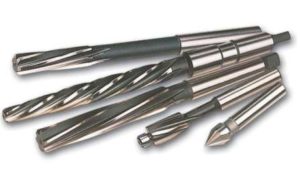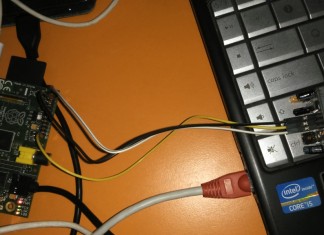Mechanical Reamer Tool
The drill does not always produce the correct hole some time with good finish. Thus a correct hole is produced with good finish of a pre drilled hole using a reamer. A common hand reamer is shown in Fig. It is commonly employed to remove minimum amount of metal (100 to 150 micron for rough reaming and 5 to 20 micron for fine reaming) from the
hole. During reaming operations, the job should be properly supported and rigidly held. A stock wrench of appropriate size for holding the reamer is used. The reamer must be kept in its correct position relative to the job. It must be run slowly and excessive feed must be avoided. It should be always be turned in the cutting direction. Sufficient amount of cutting fluid should also be employed. When removing the reamer, it must be turned in the cutting direction. Reamers with blunt or chipped edges must not be used.
1. Types of reamers
The reamers are classified as under.
(i) Hand reamer
(ii) Machine reamers
(iii) Parallel reamer
(iv) Taper reamer
(v) Reamers with straight flutes
(vi) Reamers with spiral flutes
(vii) Adjustable reamer
(viii) Expanding reamer
Some common types of reamer generally used in fitting shops are discussed as under.
1.1. Hand reamer
Hand reamer is operated or rotated by hand to finish holes and remove its ovality. Its cutting edges are backed off in the same manner as those of twist drills to give suitable clearance. It is made up of carbon or high speed steel. It is used for very fine internal turning in the hole by placing a tap wrench on the squared end of the reamer.
1.2. Machine reamer
Machine reamer is designed for slow speeds for use on drill presses, lathes, vertical milling machines etc. It is chamfered on the front side of cutting edge. It possesses straight or tapered shanks and comprises of either straight or spiral flutes.
1.3. Taper reamer
Taper reamer is widely used for finishing taper holes smoothly and accurately. It is also used to provide a taper to a drilled hole when a taper pin is to be used. It is generally performed with either straight or spiral flutes. It has spaces ground into the cutting edges or teeth to prevent overloading the entire length of each tooth of the reamer. These spaces are staggered on the various teeth to help in stock removal. The spiral fluted reamer has a shearing action that eliminates chatter and is generally preferred. Large size taper reamers are made in both roughing and finishing types. When a large amount of stock is to be removed, a roughing reamer is generally used. The finishing reamer is commonly employed to control size and smooth the hole.
1.4. Spiral fluted reamer
Spiral fluted reamer performs greater shearing action than one with straight flute. Source A Textbook of Basic Manufacturing Processes and Workshop Technology by Rajender Singh.














